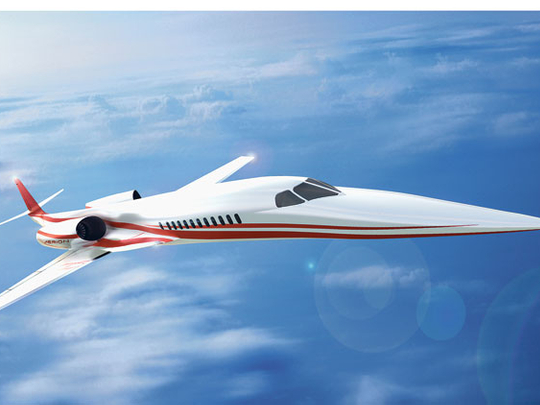
Dubai: Ten years after the Concorde disaster at Charles De Gaulle airport in Paris on July 25, 2000, and seven years after the turbojet-powered airliners were finally grounded, the age of supersonic air transport is about to recommence.
Nevada's Aerion Corporation is advertising its Aerion Supersonic Business Jet (SBJ), described as an $80 million, super fast executive plane which the company says is able to reach a speed of Mach 1.5 (1,840 km/h).
At this speed, its builders say the SBJ will make it possible to fly from Paris to New York in four hours and 14 minutes, saving busy executives three hours of air travel.
The plane in its current version can carry up to 12 passengers, but there is also a 50-seat version in the pipeline, the company said — half the capacity of the Concorde.
Aerian said the renewed possibility of being able to cross the Atlantic at supersonic speed in a business jet had attracted a lot of attention in executive circles.
Middle East orders
The company said it had already received $4 billion in orders for the jet, which is still being tested. The SBJ is expected to be launched in 2014.
Quite a few orders for the SBJ had come from the Middle East, where the concept of the airliner was presented at the Dubai Airshow in 2007, Aerion announced recently.
"The flight from New York to Paris in the SBJ will last no longer than four hours and 14 minutes," said Aerion vice chairman Brian Barents.
He said this would make it possible to take off from Paris at 8am for a breakfast meeting in Manhattan.
Also, it would take only nine-and-a-half hours to fly from the US East Coast to Asia.
However, supersonic flight is restricted in US airspace because of the Federal Aviation Administration's sonic boom restrictions.
So in the US, the plane is able to fly at a high subsonic speed of Mach 0.98, reducing coast-to-coast travel in the US by 41 minutes compared to a conventional aircraft, Barents said.
"It is the technology that enables the Aerion to economically fly at both high subsonic speeds as well as supersonic," he said.
"It will be possible to traverse the US at Mach 0.98 with operating costs equivalent to today's large business jets, while still being able to access all the airports where most business jets operate now and meeting applicable noise and emissions regulations."
Development costs for the SBJ are calculated at $1.2 billion to $1.4 billion.
Aerion is not the only aircraft builder to develop a small supersonic jet, but it seems to be further along with its concept.
Cessna has said it is building a supersonic jet, but no design has been made public yet.
The Cessna Citation X is currently the fastest civilian aircraft being flown, attaining Mach 0.92.
Sukhoi has been working on the S21 supersonic business jet which flies up to eight people but no launch date has been set.
Russian aircraft giant Tupolev has introduced its Tu-444 as a concept for a supersonic business jet.
Another concept is the QSST plane by the US's Supersonic Aerospace International.
The NEXST supersonic jet is being created by the Japan Aerospace Exploration Agency.










